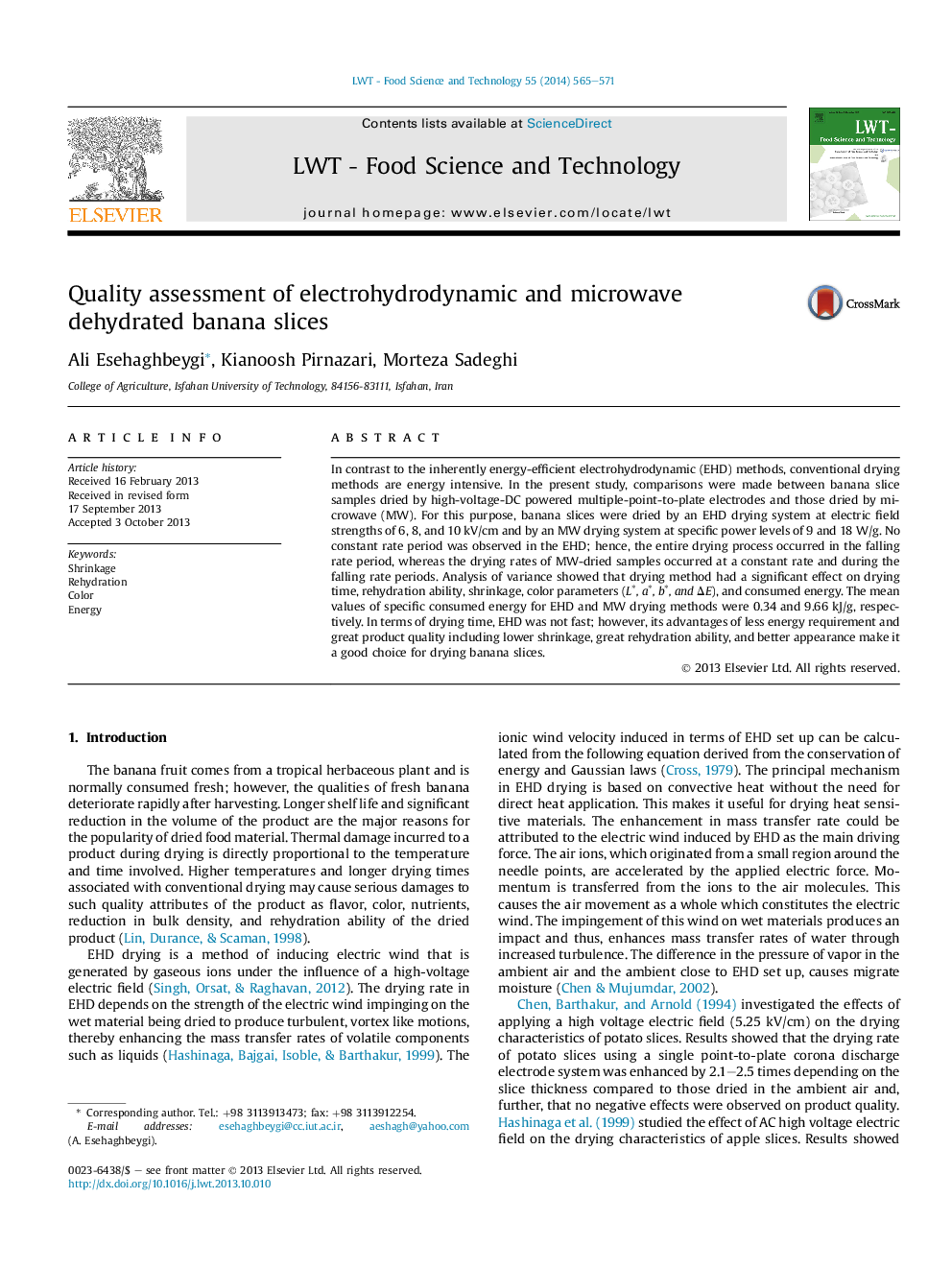| Article ID | Journal | Published Year | Pages | File Type |
|---|---|---|---|---|
| 6404516 | LWT - Food Science and Technology | 2014 | 7 Pages |
Abstract
In contrast to the inherently energy-efficient electrohydrodynamic (EHD) methods, conventional drying methods are energy intensive. In the present study, comparisons were made between banana slice samples dried by high-voltage-DC powered multiple-point-to-plate electrodes and those dried by microwave (MW). For this purpose, banana slices were dried by an EHD drying system at electric field strengths of 6, 8, and 10Â kV/cm and by an MW drying system at specific power levels of 9 and 18Â W/g. No constant rate period was observed in the EHD; hence, the entire drying process occurred in the falling rate period, whereas the drying rates of MW-dried samples occurred at a constant rate and during the falling rate periods. Analysis of variance showed that drying method had a significant effect on drying time, rehydration ability, shrinkage, color parameters (Lâ, aâ, bâ, and ÎE), and consumed energy. The mean values of specific consumed energy for EHD and MW drying methods were 0.34 and 9.66Â kJ/g, respectively. In terms of drying time, EHD was not fast; however, its advantages of less energy requirement and great product quality including lower shrinkage, great rehydration ability, and better appearance make it a good choice for drying banana slices.
Keywords
Related Topics
Life Sciences
Agricultural and Biological Sciences
Food Science
Authors
Ali Esehaghbeygi, Kianoosh Pirnazari, Morteza Sadeghi,
